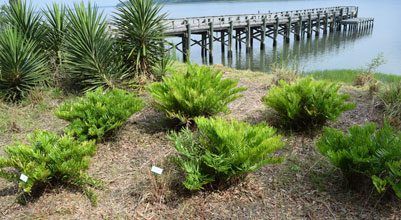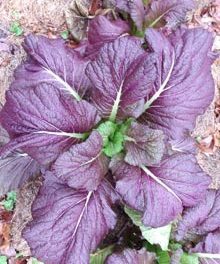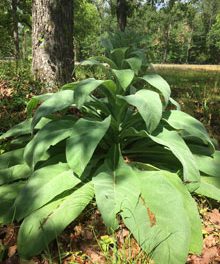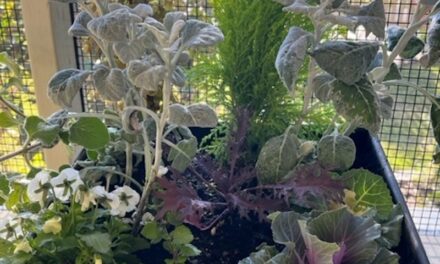 Non-native or exotic invasive plants are species that were introduced to an area and, having no natural predators, displace native species.
Non-native or exotic invasive plants are species that were introduced to an area and, having no natural predators, displace native species.
Many of these were intentionally brought to southeastern North America as ornamentals from other continents. While they often have attractive flowers, foliage, or fruit, “invasives” disrupt natural ecosystems, wildlife functions such as food and habitat, water flow and soil health. Invasive exotic plants may also produce lots of seeds and spread into woodlands. Some examples are Bradford pear, privet, wisteria, and Chinese elm. Others produce a thick canopy and shade out native species or substances that prevent seed germination (Kudzu and tallow tree).
“Beauty is only skin deep, and Pretty is as pretty does” are two sayings that I heard as a child growing up. Beauty alone should not be a justification for selecting a plant for the landscape. Studies have shown that birds need lots of insects to feed and fledge their chicks, with at least 70% native vegetation. Native shrubs, vines, and trees support insects: adults and larvae of beetles, butterflies, moths, ants, and flies. Certain insects depend on native flora as hosts for the larval stage and the berries and seeds for adults. Food webs depend on plants for energy, oxygen, and carbohydrates. Decomposing leaves build soil; the leaf litter and humus are essential to the microbes that recycle those nutrients.
Right Plant Right Place
Selecting plants to use in the landscape one must consider form, mature height and width, site conditions like light, moisture, and hardiness. Just as important as those considerations are the ecological services that a species can deliver. There is a native plant for every niche and microclimate of your landscape. There are communities of plants that want to grow in hot muggy shade or in full sun, and other groups that will thrive in a floodplain or on the marsh.
Our native grasses, perennials, trees, shrubs, vines, and groundcovers are often the best choices for preserving ecosystems, use less pesticides and irrigation because they are adapted to the climate, heat, and humidity of our region.
Knowing what to ask for when working with a landscape designer or shopping at a garden center is key. Common names can vary regionally so the scientific name, genus and species, should be queried. There are lots of oaks, hollies, and laurels, and sometimes the common name may indicate the origin of the plant for example Chinese holly or American elm. There are some very good lists by region and sites, and most of the common natives are carried by garden centers, native plant sales, and arboreta. There are several southeastern mail order companies that carry unusual species and named varieties of more common ones.
Attractive not only to birds, butterflies, and other wildlife, native herbaceous and woody species can give seasonal interest and beauty. Flowering perennials like coneflower, passion vine and lobelias appeal to gardeners and offer another way to attract creatures than just having feeders. Plant them (native plants) and they (birds, bees, and butterflies) will come.
Think globally plant locally.







